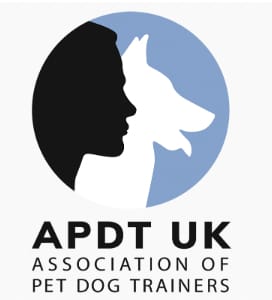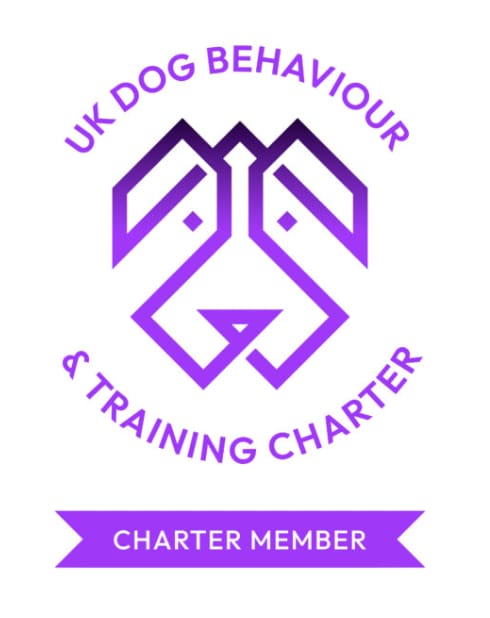What does a dog behaviourist do?
25/11/2019 - Blog
A dog behaviourist is someone who understands why dogs do what they do and helps you to teach your dog a different approach to life.
A qualified dog behaviourist can help you cope with your dog’s bad manners, naughtiness and unwanted activities such as
- Aggression towards other dogs
- Howling, barking or destructive behaviour when left home alone
- Barking and growling at strangers
- Obsessive behaviours such as spinning, pacing or shadow chasing
- Anxiety, fear or phobias
- Chasing bicycles, cars etc
Understanding canine behaviour
Canine behaviourists are usually qualified dog trainers who have extended their studies and their experience to gain a deeper understanding of canine behaviour. A qualified dog trainer understands how dogs learn and has all sorts of tried and tested techniques to help you and your dog nurture good manners, confidence and general obedience. Many dog trainers help with fun stuff such as scentwork, agility, trick training or flyball.
Behaviourists take dog training knowledge one step further and use it to help dogs with challenging behaviour to find a better way of doing things. For example, a dog who growls, snarls and snaps at other dogs can be taught to ignore other canines. It takes patience and it requires a measured approach but everything begins by finding out why your pet is behaving in a certain way.
It’s not exactly the same, but if you think of a dog behaviourist as the equivalent of a human psychotherapist, you’ll not be far wrong.
What techniques to dog behaviourists use?
The very first thing a dog behaviourist will do is ask you to take your dog to the vets to rule out any physical cause for the unwanted behaviours. Could he or she be in pain? Have difficulty hearing? Be struggling with a neurological or a metabolic problem. Your pet will find it hard to learn if he or she is distracted by discomfort.
Learning about your dog’s character
Next comes a thorough assessment of your dog’s behaviour. That involves learning as much as possible about your dog’s history. Is he or she a rescue dog? From a reputable breeder? Born in a home or in a kennel? Has your pooch been to any training classes? What (if any) techniques have been used in training? The more we can discover about your dog’s life experiences, the easier it will be to understand their actions and reactions.
Each dog behaviourist will have slightly different methods of learning about your dog. At CK9 Training, we like to spend up to 2 hours on the first consultation. Normally, we will visit you at home so that we can observe your dog in his or her usual environment.
By meeting your furry friend when he or she is relaxed we can build a better picture of his or her personality. We’ll ask you to describe their behaviours in as much detail as possible. We want to know about their “normal” habits as well as the problem behaviour. Before we can start training it’s important to understand what motivates your pooch. What does he or she really love?
When we start analysing the unwanted behaviour we’ll think about the lead up to it – what happens before your dog misbehaves? What’s the trigger? Where does it normally occur? And what are the signs that it’s about to happen? A full and complete picture makes for an easier diagnosis and simpler solution.
Working with you towards a happier dog
When the problem (or problems – because many behavioural struggles are complex) have been assessed. A dog behaviourist will suggest a simple, step by step training programme to alleviate fears and improve behaviour.
For example – Mrs A’s dog Patch gets very nervous if he meets horses whilst out on a walk. He will lunge at them, barking, snarling and pulling on the lead. Mrs A is worried that the day will come when he causes a nasty accident.
The behaviourist doesn’t need to see Patch in action at this stage. There’s no need to put anyone in danger. Mrs A describes it very well and over the course of the consultation more and more details come up in the discussion. It turns out that Patch is from a great breeder, has been well socialised and is comfortable with being walked past sheep, cows, other dogs – any other animals in fact. He doesn’t even mind if he sees a horse in the distance. The problem is specific to horses that are close to him.
Mrs A recalls that when Patch was around 5 months old and not very tall (he’s a cocker spaniel), he was being walked on the pavement when a group of 5 or 6 horses and riders approached on the same side of the road. Eager to pass the dog without spooking the horses, the riders urged their steeds into a trot. Patch’s owner wasn’t expecting the horses to suddenly increase speed - she was hoping that her pup would have an opportunity to watch the creatures passing quietly by. She thinks – and she’s probably right – that having all of those great big hooves clattering past his face was scary for Patch and he’s not forgotten the incident.
It’s likely that Patch’s brain has formed an association between horses and danger. We don’t know whether it is the smell, the site or the sound that triggers the reaction. It seems as though Patch has come to the conclusion that barking and lunging will make the scary horses go away. But you and I know that they’re just passing anyway and will move on without all that fuss and palaver. In fact Patch’s behaviour is increasing the risk of a bad reaction from the horse.
A dog behaviourist will suggest ways in which Patch can learn gradually but safely, that passing horse are not a threat to him and that there’s no need to get stressed.
Depending on Patch’s personality, remedial work might involve some training in the home around things like focus and impulse control. Then perhaps introducing to some horsy smells without the horses. (eg A grooming brush or a piece of tack).
The objective of the training is to use positive association to re-program Patch’s brain without distressing (or endanger) him. One technique might involve rewarding Patch for sitting quietly within 20 metres of a horse, then 15 metres, 10 metres etc. Some pets learn quickly, some need more time. The dog behaviourist will be careful to let each dog progress at a speed that works for them.
Could a behaviourist be the answer to your dog’s problems?
Every dog is unique but provided the owners are willing to work with the behaviourist, implement any changes and be patient, most pooches can be helped.
If your dog does have some challenging behaviours and you are struggling to manage them, please don’t consign him or her to a rehoming centre until you have spoken to a qualified behaviourist.
How to find a dog behaviourist
At the time of writing, the dog training industry is unregulated. Anyone can call themselves a dog trainer or a dog behaviourist – even if they have no qualifications or experience. Always do your homework before contacting a professional.
Look for good reviews, ask your vet or dog walker for advice and check that anyone you call has the right credentials If your behaviourist is a Member of the CAPBT he or she is definitely well trained. The IMDT also has a register of trustworthy dog training professionals, as does the APDT.
Useful Links
More about dog behaviourist services in Surrey








